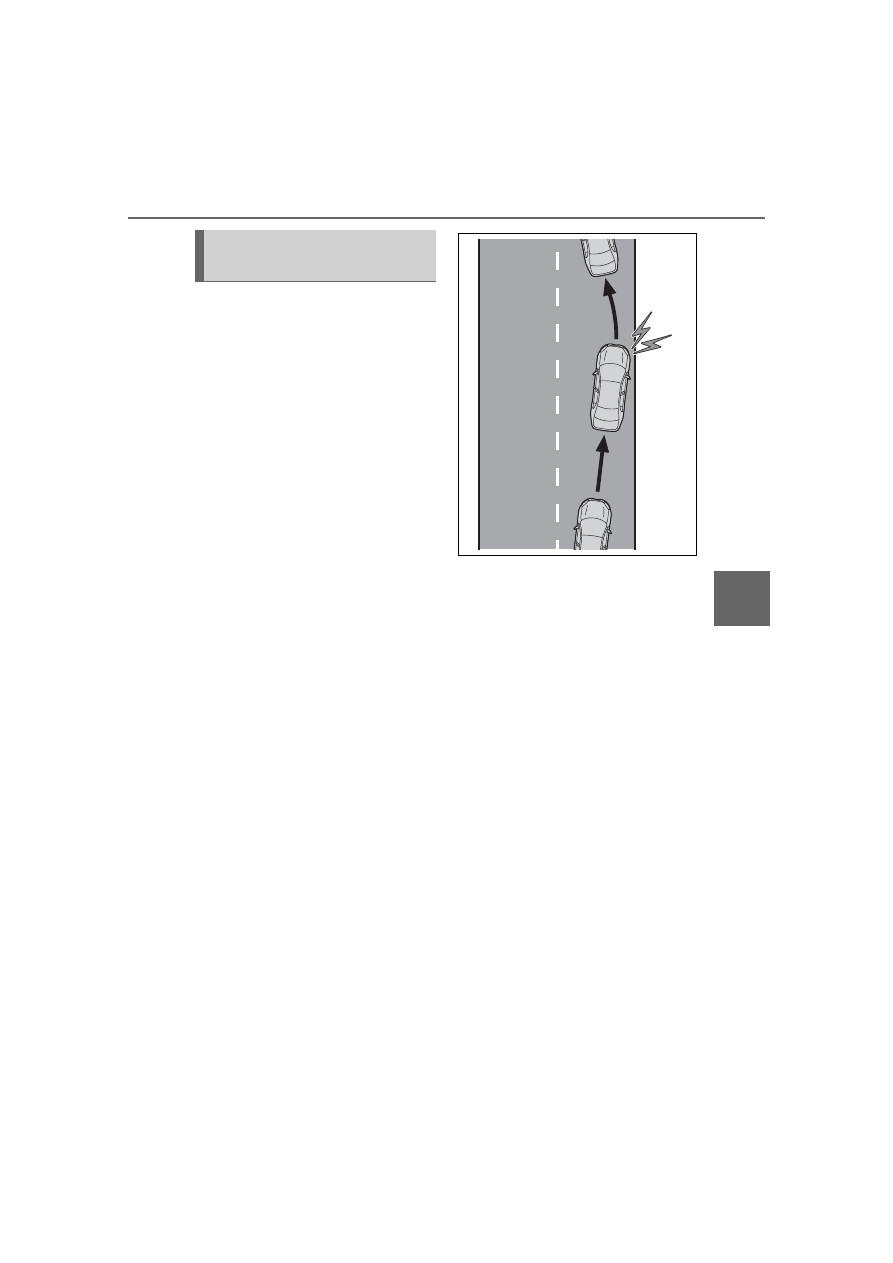Toyota Mirai (2022 year). Manual in english - page 14

227
5-5. Using the driving support systems
5
Dr
iv
ing
■
Lane departure alert func-
tion
When the system determines
that the vehicle might depart
from its lane or course
*
, a warn-
ing is displayed on the multi-
information display, and either a
warning buzzer will sound or the
steering wheel will vibrate to
alert the driver.
When the warning buzzer sounds
or the steering wheel vibrates,
check the area around your vehicle
and carefully operate the steering
wheel to move the vehicle back to
the center of the lane.
Vehicle with BSM: When the sys-
tem determines that the vehicle
might depart from its lane and that
the possibility of a collision with an
overtaking vehicle in the adjacent
lane is high, the lane departure
alert will operate even if the turn
signals are operating.
*
: Boundary between asphalt and
the side of the road, such as
grass, soil, or a curb
■
Steering assist function
When the system determines
that the vehicle might depart
from its lane or course
*
, the sys-
tem provides assistance as nec-
essary by operating the steering
wheel in small amounts for a
short period of time to keep the
vehicle in its lane.
Vehicle with BSM: When the sys-
tem determines that the vehicle
might depart from its lane and that
the possibility of a collision with an
overtaking vehicle in the adjacent
lane is high, the steering assist
function will operate even if the turn
signals are operating.
*
: Boundary between asphalt and
the side of the road, such as
grass, soil, or a curb
Functions included in LTA
system